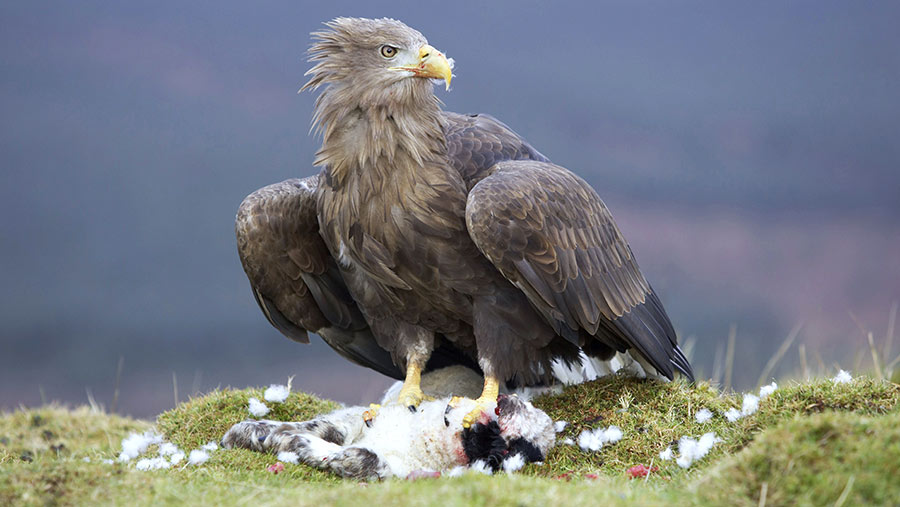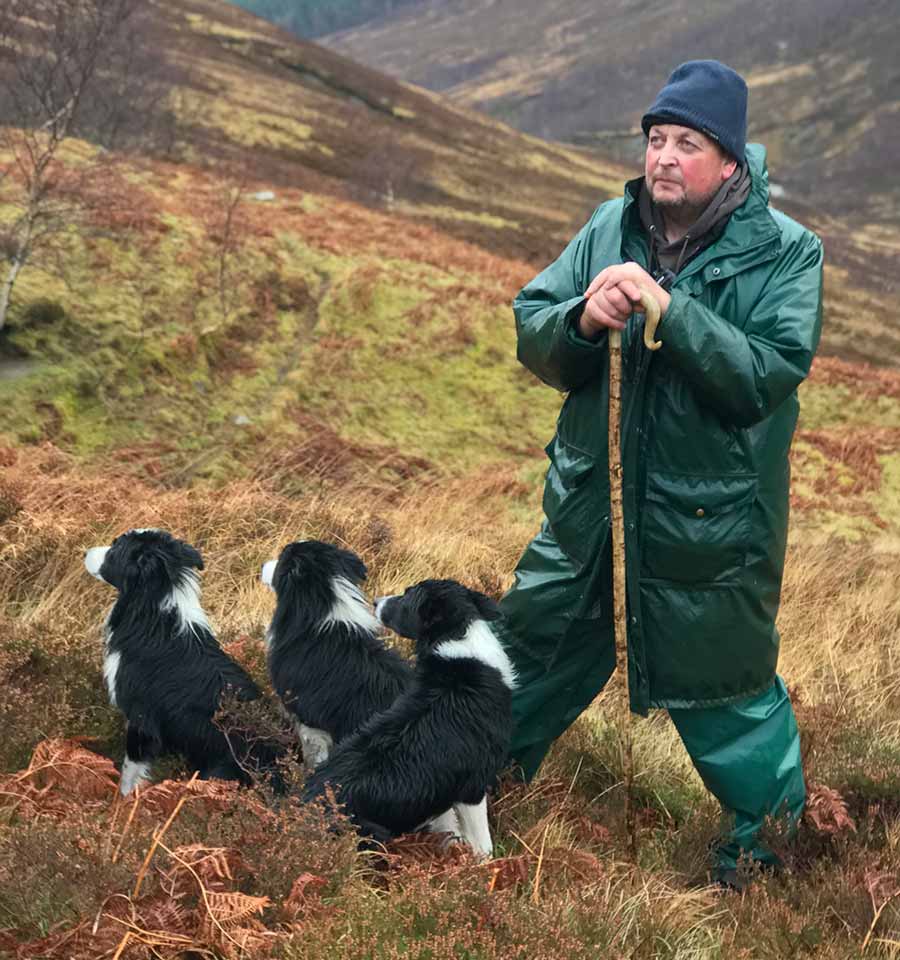Action plan aims to stop sea eagles killing sheep
 © blickwinkel_Alamy Stock Photo
© blickwinkel_Alamy Stock Photo A long-awaited action plan to manage sea eagles and their impact on farming in Scotland has been published.
Farmers and crofters say there has been an upsurge in sea eagle attacks on sheep on the west coast since they were reintroduced in the 1970s.
In areas where there is a lack of prey, some farmers report losing 20 to 30 lambs each season owing to attacks on ewes and lambs by the birds.
See also: Sheep industry attacks decision to release sea eagles
One Scottish Natural Heritage (SNH) monitor farm has demonstrated the loss of an extra 181 lambs in the period 2012-2018.
Post-mortem examinations of a small sample of lambs killed by sea eagles, also known as white-tailed eagles, found most to have been fit and healthy when attacked rather than dead or unviable lambs, as some had originally believed.
130 breeding pairs
Currently, there are about 130 breeding pairs of sea eagles in Scotland, in an area ranging from Skye and Mull to the mainland. This number is predicted to increase to 500 by 2040.
The action plan was published by a stakeholder group on the SNH website on Friday (31 May) following an agreement between SNH, NFU Scotland and others to work together to find a solution.
The partnership between farmers and conservationists aims to trial non-lethal measures to minimise the impact that the eagles are having on sheep flocks and “promote sustainable co-existence”.
Ross Lilley, SNH agriculture policy manager, told Farmers Weekly that sheep on open hillsides are more vulnerable to sea eagle predation than those in enclosed fields .
“The issue is mostly happening when the birds are needing to feed chicks in their nests,” said Mr Lilley.
“Especially in a bad winter and spring, the birds are having to go further to find food. That’s when a particular issue arises – the lambs are less able to defend themselves and the birds are hungry.”
Distraction food sources, such as salmon or deer, are being trialled in a bid to discourage the birds from killing lambs. Other methods include inflatable scarecrows, reflective helium balloons, and having more people walk around hillsides.
Gas guns, timed to produce periodic bangs, have also been trialled and lasers could be deployed on hillsides to deter birds preying on sheep.
Farmers ‘bear costs’
NFU Scotland has welcomed the publication of the action plan, which recognises the problems caused by some eagles and states clearly for the first time that they do prey on healthy sheep and lambs. NFUS president Andrew McCornick said: “For a long time, the impression has been given that only weak or dead lambs are subject to white-tailed eagle predation.
“Recognition that predation includes healthy sheep and lambs vindicates what many farmers and crofters affected by white-tailed eagles have been saying for some considerable time.”
He added: “The successful reintroduction of white-tailed eagles has brought tourism benefits to some, but the reality is that those benefits tend not to go to the farmers and crofters of the west coast who actually bear the costs and endure the impact that these birds are having on livelihoods that are already vulnerable.”
Meanwhile, Natural England has confirmed that 60 individual white-tailed eagles will be released over a five-year period from this summer.
Over the next five years, young birds bred in the wild in Scotland will be reintroduced on Forestry England woodland on the Isle of Wight. Breeding is not expected to start until at least 2024.
Case study: David Colthart, Achnacone Farm, Appin, Argyll
Sheep farmer David Colthart keeps 650 Blackface ewes and 50 cross ewes across 1,295ha.
Mr Colthart said a lot of the genetic hardiness of sheep has gone, because hefted sheep are not grazing in rough, hilly terrain due to the impact of sea eagles.
He has had to buy in 220-250 sheep over the past few years to try to maintain the hefted flock to minimise damage caused by the birds to his business.
“We have had to replace the lambs that we should have bred anyway,” he explained.
“Secondly, you don’t have as many ewe lambs to sell on because your flock is performing badly. It’s a double-whammy.”

David Colthart
Mr Colthart welcomed the acceptance by SNH that sea eagles predate healthy sheep – and he said it was important that trials looking at non-lethal measures to stop sheep predation by the birds continued.
But he added: “On farms where significant predation continues to happen, many of us feel that these birds have to be removed if all other measures have been exhausted.”
Sea Eagle Management Scheme
Is your farm affected by sea eagles? Livestock farmers and crofters in Scotland can apply to the Sea Eagle Management Scheme for support.
Up to £1,500 per year (dependent on holding size) is available under the scheme for affected land managers to carry out agreed livestock management designed to mitigate the impact of sea eagles. For more information, visit www.nature.scot
